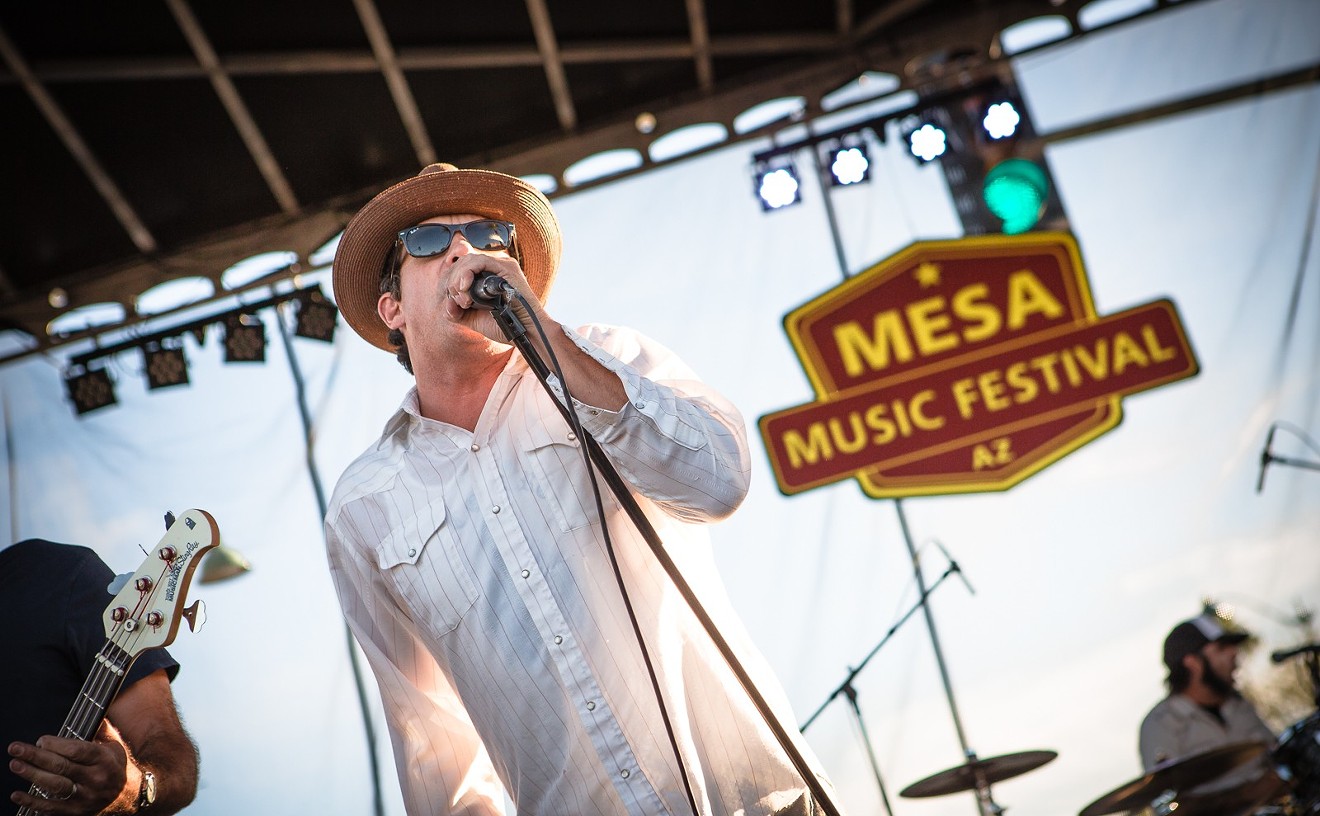Up a Tree
(Sub Pop)
In recent years, sonic experimentalism has taken a foothold in pop music. This infiltration of the mainstream has come most notably through the work of Beck, who's spawned a legion of imitators eager to copy his formula for combining hip-hop beats, folk stylings and spoken word with synths, loops and other disparate elements.
For the most part, these projects have yielded unsatisfying results. Perhaps that's why the the first full-length release from Looper is such a pleasant surprise.
Looper is the brain child of Stuart David--known to indie-rock fans as the bassist for Scottish chamber-pop practitioners Belle and Sebastian. David is joined in the multimedia outfit by his artist wife Karn and her photographer brother Ronnie Black. The trio began performing in David's native Glasgow, combining the visual and artistic contributions of his partners with his own musical and aural stylings.
While this might sound like an interesting floor show, it hardly promised the kind of project that would translate effectively to tape. Fortunately, it doesn't take long for the group to dismiss that assumption, as Up a Tree is a consistently interesting and enjoyable record from start to finish. While the album utilizes many of the same elements as Beck, Looper is a far different type of musical entity.
The album is bookended by a pair of instrumentals, "The Treehouse/Back to the Tree House," which feature the cleverly edited sounds of children talking and playing. The former is a funky, beat-driven number, while the latter is a piano ballad that uses the soothing sound of children at play to evoke mood.
David steers clear of the predictable sonic overkill that often mars this type of record. "Up a Tree" has a genuine ambiance without trying too hard to be "ambient." However, he doesn't shirk his duty to explore a wide variety of musical idioms, whether it's the pulsating techno of "Looper" or the pseudo jazz of "Columbo's Car."
A large part of the charm of Up a Tree lies in its eclectic spoken-word pieces. David's thick Glaswegian accent whispers through a number of alternately weird and touching short stories punctuated by a variety of unusual sonic elements. The best example of this is the clacking of a typewriter on "Impossible Things #2." Melding with the trip-hop-influenced beat, the syncopated pop of the typewriter provides a fitting rhythmic accompaniment to the song.
Part of the reason that David is able to escape the trap that most experimentalists fall into is that the majority of his songs are rooted in a traditional musical aesthetic. Up a Tree has a decidedly strong folk and pop consciousness which is reflected in unabashedly simple and melodic numbers like "Burning Flies" and "Quiet and Small." Moreover, David doesn't feel the need to use technological or production tricks as a crutch to support the material.
Subtract the two or three spoken-word pieces, strip away the production elements, and what you're left with is a subdued but satisfying album of folk-pop. As it stands, Up a Tree is more ambitious than that, and contains enough to pique the interest of even the most jaded art-pop connoisseurs.
--Bob Mehr
Band of Gypsys
Hendrix: Live at the Fillmore East
(Experience Hendrix/MCA)
Jimi Hendrix's catalogue has long been a mismanaged mess, but this fascinating live collection offers evidence that the Hendrix estate is trying to set things right. This is meant to be a companion to--not a replacement for--the original Band of Gypsys album, for the first time giving full demonstration of how important a phase of Hendrix's musical evolution this was.
Some of this material has surfaced before, but never in a form that established context. Some of the songs ("Izabella," "Burning Desire") had never been officially released.
If you're a fan, you've got to hear the extended reworking of "Stone Free" or the muscle and fire of "Voodoo Chile (Slight Return)," two Experience staples reprised by the Band of Gypsys in a series of four concerts on December 31, 1969, and January 1, 1970.
When the Experience petered out, Hendrix was ready to move on. This version of the Band of Gypsys evolved out of a larger band that Hendrix fielded at Woodstock. The crux of both groups was Hendrix's comfortable relationship with former Army buddy Billy Cox on bass. Their bond meant a more direct connection to black music.
In this trio lineup, with Buddy Miles on drums, Hendrix remained a powerful, pyrotechnical guitarist. His ax-wielding prowess produced hellhounds of sound, moaning demons and titanic buzz saws meant to slice off the top of your head. In addition, though, he got a chance to play some unadulterated funk, like the tasty rhythm riffs of "We Gotta Live Together."
As with the original Band of Gypsys album, the centerpiece of each disc in this set is "Machine Gun," Hendrix's explosive take on death in Vietnam (they're both different versions from the one on Band of Gypsys). They show Hendrix radically changing his approach from performance to performance.
The amalgam of hard, heavy rock with funk, rhythm and blues and gospel showed a real change in compass settings for Hendrix. Had he lived long enough to pursue it further, he might have again changed the course of rock, averting the idiotic schism that resulted in a war between disco and hard rock in the late '70s.
As momentous a move as this was for Hendrix, he might not have had it recorded at all if not for a legal battle. Hendrix, who was then under contract to Warner Bros., owed Capitol Records an album.
He tried to oblige by working hard on a Band of Gypsys studio release. Capitol's pressure for product led Hendrix's manager to decide that they should record the New Year's Eve and New Year's Day shows and piece together an album. But if Hendrix was motivated by contractual obligations at these Fillmore East shows, the music completely transcends such business considerations.
--Salvatore Caputo










